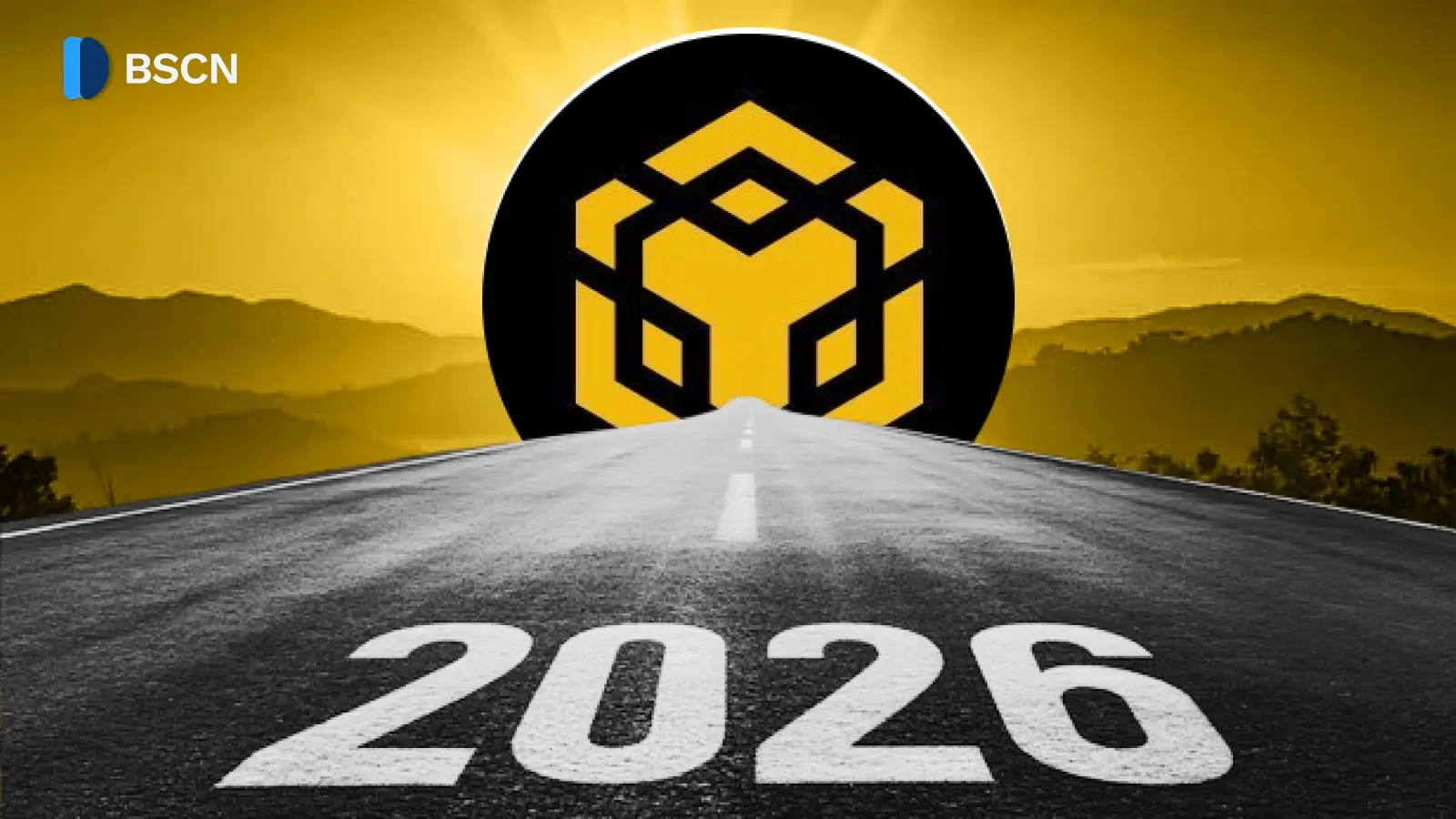News
(Advertisement)
Our Top Three Projects from BNB’s MVB Season 10 Cohort

A closer look at our top three projects from BNB’s MVB Season 10 cohort — RICE AI, Sigma.Money, and R2 Protocol — and what they bring to Web3.
Soumen Datta
August 25, 2025
(Advertisement)
Table of Contents
Last July, BNB Chain unveiled the 15 projects selected for Season 10 of its Most Valuable Builder (MVB) Accelerator Program. The initiative, run in partnership with YZi Labs and CMC Labs, supports early-stage Web3 teams with mentorship, tokenomics guidance, and investment opportunities.
Out of the new cohort, we reviewed all the selected projects and picked three that stood out based on their technical approach, economic models, and potential impact within the ecosystem. These are RICE AI, Sigma.Money, and R2 Protocol. This article reflects our own assessment, not an official ranking, and highlights why we found these three projects particularly noteworthy.
RICE AI: Building a Blockchain-Powered Robotics Data Marketplace
RICE AI aims to solve one of robotics’ largest bottlenecks — access to quality real-world training data. It creates a decentralized platform where contributors generate data and researchers buy it to improve robotics AI models.
How RICE AI Works
RICE AI operates as a two-sided marketplace:
- Contributors control robots remotely using joysticks, VR controllers, or webcams. Their actions generate datasets such as robot vision, joint kinematics, and force feedback. They earn RICE tokens based on task difficulty and data quality.
- Consumers — typically research labs or robotics companies — purchase these datasets to train AI systems for industrial, healthcare, and logistics use.
This framework directly addresses the $260 billion robotics data market projected by McKinsey for 2030.
Technical Infrastructure
The platform integrates several safeguards to ensure that the data is useful:
- Quality scoring: AI models check collected data against human-reviewed benchmarks.
- Redundancy filtering: Embedding databases eliminate repetitive datasets.
- Real-world backing: RICE AI leverages its parent company, Rice Robotics, which already has 500+ robots deployed across hospitals and logistics centers.
This connection to operational robots gives the marketplace a credible supply of contributors and real-world data.
Tokenomics of RICE AI
RICE tokens drive activity across three channels:
- Rewards for contributors and robot providers.
- Subscription discounts for buyers who pay in RICE.
- Deflationary burns, where 100% of data-sale fees permanently reduce token supply.
This structure ties token utility to platform activity, with built-in scarcity that aligns with long-term growth.
Sigma.Money: Volatility Tranching for DeFi on BNB Chain
Sigma.Money introduces a DeFi primitive known as “volatility tranching” to the BNB Chain. The system splits exposure to BNB into two tranches — one stable, one leveraged — letting users choose between yield and price risk.
Core Design
Sigma builds on the earlier f(x) Protocol by adapting its mechanics for BNB-native integration. Users interact with two assets:
- bnbUSD: A stablecoin that earns yield from staked BNB collateral. Holders give up price exposure but receive steady returns.
- xBNB: A leveraged token that retains full exposure to BNB price swings, while giving up yield.
Both assets are fully backed by yield-bearing BNB collateral. This setup differs from traditional collateralized debt positions, achieving up to 100% loan-to-value efficiency.
Why It Matters
In centralized exchanges, leveraged BNB traders often pay funding costs to maintain positions. Sigma’s model replaces this with yield transfer: the yield from BNB collateral funds bnbUSD holders, while xBNB traders get fee-free leverage.
Through integrations with ListaDAO staking assets such as slisBNB and clisBNB, Sigma ensures that real yield flows into the system.
Use Cases
- Stablecoin strategies: bnbUSD offers real-yield stablecoin exposure, attractive to risk-averse users.
- Leverage trading: xBNB provides cost-free leveraged long positions.
- DeFi composability: Protocols can build structured products using Sigma’s volatility tranching mechanism.
By uniting yield stability and leveraged conviction within one framework, Sigma.Money extends DeFi’s design space for BNB Chain users.
R2 Protocol: Consumer Access to Real-World Asset Yields
R2 Protocol focuses on tokenizing real-world assets (RWA) and making institutional-grade yields available to retail users. It provides a yield-bearing stablecoin, R2USD, backed by assets such as U.S. Treasuries, money market funds, and private credit instruments.
How R2 Protocol Works
- Users deposit USDC or USDT to mint R2USD, a stablecoin fully backed 1:1 by RWAs.
- R2USD can then be staked into different pools:
- sR2USD (T-Bill Pool): Lower-risk, ~4–5% APY.
- sR2USD+ (Private Credit Pool): Medium-risk, ~8–12% APY.
Rewards are distributed in R2 Tokens, allocated proportionally based on staked amount and holding period.
Redemption and Settlement
- sR2USD: T+3 settlement period for withdrawals.
- sR2USD+: T+7 to T+10 settlement due to less liquid assets.
- No permanent lockups, but early withdrawals before the season ends forfeit rewards.
This seasonal yield system encourages longer participation while keeping redemption accessible.
Tokenomics of R2
The protocol issues R2 Tokens as yield certificates and governance assets. They are distributed in proportion to realized yields, avoiding inflation disconnected from actual returns. Users can either:
- Redeem R2 via the bonding contract at a guaranteed APY of 6–10%.
- Trade R2 freely on decentralized or centralized exchanges.
This blend of flexibility and real-yield support anchors the protocol’s stability.
Why These Three Projects Stand Out
From the 15 projects in MVB Season 10, RICE AI, Sigma.Money, and R2 Protocol stood out because of their direct technical applications:
- RICE AI tackles robotics’ data bottleneck with a blockchain-powered marketplace tied to deployed robots.
- Sigma.Money introduces volatility tranching to BNB Chain, combining stability and leverage in a single protocol.
- R2 Protocol bridges retail users to institutional-grade RWA yields through an accessible, tokenized system.
Each project reflects a distinct approach to building infrastructure that could influence how Web3 interacts with robotics, financial markets, and real-world assets.
Conclusion
Our review of BNB’s MVB Season 10 highlights three projects with strong technical underpinnings and well-defined economic structures. RICE AI, Sigma.Money, and R2 Protocol each address specific challenges in robotics, decentralized finance, and yield access.
While the broader cohort includes many promising teams, these three stood out in terms of clarity of design and potential integration within the BNB ecosystem. The accelerator program continues to showcase early-stage projects that are experimenting with concrete, technical solutions rather than abstract concepts.
Worth noting, the list of projects highlighted here reflects our personal opinions and research. It is not financial advice and does not constitute an endorsement, promotion, or guarantee of any project. Always do your own due diligence before making decisions.
Resources:
BNB Chain’s MVB Season 10 projects announcement: https://www.bnbchain.org/en/blog/meet-the-most-valuable-builder-mvb-season-10-cohort
RICE AI whitepaper: https://rice-ai.gitbook.io/home
Sigma Money Medium: https://medium.com/@sigmadotmoney/introducing-sigma-money-volatility-tranching-for-bnb-9558155ecfeb
R2money docs: https://r2money.gitbook.io/r2
Read Next...
Disclaimer
Disclaimer: The views expressed in this article do not necessarily represent the views of BSCN. The information provided in this article is for educational and entertainment purposes only and should not be construed as investment advice, or advice of any kind. BSCN assumes no responsibility for any investment decisions made based on the information provided in this article. If you believe that the article should be amended, please reach out to the BSCN team by emailing [email protected].
Author
 Soumen Datta
Soumen DattaSoumen has been a crypto researcher since 2020 and holds a master’s in Physics. His writing and research has been published by publications such as CryptoSlate and DailyCoin, as well as BSCN. His areas of focus include Bitcoin, DeFi, and high-potential altcoins like Ethereum, Solana, XRP, and Chainlink. He combines analytical depth with journalistic clarity to deliver insights for both newcomers and seasoned crypto readers.
(Advertisement)
Latest News
(Advertisement)
Crypto Project & Token Reviews
Project & Token Reviews
Comprehensive reviews of crypto's most interesting projects and assets
Learn about the hottest projects & tokens














